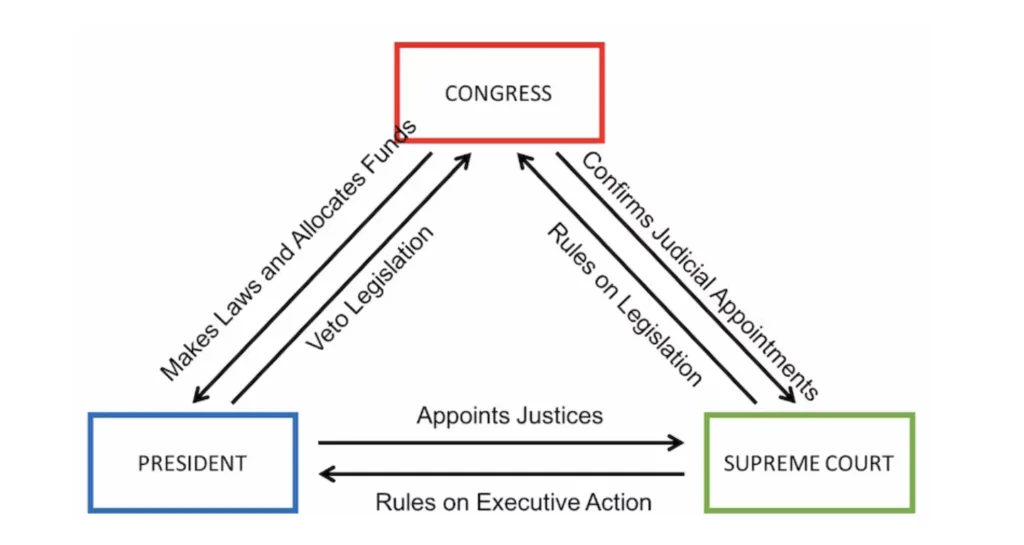Managing Muscle Tension with the Help of Relaxant Therapy
Muscle tension can significantly affect daily life, leading to discomfort, reduced mobility, and even chronic pain if left untreated. Relaxant therapy offers an effective solution to manage and alleviate muscle tension, helping individuals regain comfort and functionality.

Muscle tension can significantly affect daily life, leading to discomfort, reduced mobility, and even chronic pain if left untreated. Relaxant therapy offers an effective solution to manage and alleviate muscle tension, helping individuals regain comfort and functionality. This comprehensive guide explores how relaxant therapy works, its various applications, and strategies for maximizing its benefits. Additionally, this guide provides essential information on managing muscle pain with muscle relaxants, including their proper use, potential side effects, and complementary approaches to enhance recovery.
Understanding Muscle Tension
Muscle tension refers to the persistent contraction of muscles, which can result from physical exertion, stress, or underlying medical conditions. It often manifests as stiffness, soreness, or a restricted range of motion. Common causes of muscle tension include:
-
Physical Overuse: Repetitive motions or overexertion during exercise can strain muscles, leading to tension and discomfort.
-
Poor Posture: Sitting or standing in incorrect positions for prolonged periods can cause imbalances and muscle strain.
-
Stress and Anxiety: Emotional stress triggers the release of cortisol, which can lead to muscle tightness.
-
Injuries: Muscle tension is a common response to injuries such as sprains, strains, or fractures.
-
Chronic Conditions: Disorders like fibromyalgia, arthritis, and myofascial pain syndrome are associated with ongoing muscle tension.
What Is Relaxant Therapy?
Relaxant therapy involves the use of medications, techniques, and interventions to relieve muscle tension and promote relaxation. It aims to reduce pain, improve mobility, and enhance overall well-being. Relaxant therapy can include:
-
Pharmacological Muscle Relaxants: These are medications designed to alleviate muscle spasms and tension. They act on the central nervous system (CNS) or directly on the muscles.
-
Physical Therapies: Techniques such as massage, stretching, and heat application help loosen tight muscles and restore flexibility.
-
Mind-Body Practices: Activities like yoga, meditation, and breathing exercises reduce stress and its impact on muscle tension.
How Muscle Relaxants Work
Muscle relaxants are a cornerstone of relaxant therapy. They function by targeting the mechanisms responsible for muscle tension. Depending on their type, they may:
-
Suppress Nerve Signals: Centrally acting relaxants, such as cyclobenzaprine and tizanidine, reduce nerve signals from the brain and spinal cord that cause muscle contractions.
-
Inhibit Muscle Contractions: Peripherally acting relaxants, like dantrolene, work directly on muscle fibers to block calcium release, which is essential for contraction.
-
Provide Sedative Effects: Many relaxants have calming properties that reduce stress-induced tension and promote relaxation.
Applications of Relaxant Therapy
Relaxant therapy is used to manage a variety of conditions and scenarios, including:
-
Acute Injuries: Muscle relaxants relieve pain and stiffness caused by strains, sprains, or overuse injuries.
-
Chronic Pain Conditions: Disorders such as fibromyalgia, myofascial pain syndrome, and tension headaches benefit from relaxant therapy.
-
Spasticity: Neurological conditions like multiple sclerosis, cerebral palsy, and spinal cord injuries often cause spasticity, which relaxant therapy can alleviate.
-
Post-Surgical Recovery: After orthopedic or spinal surgeries, relaxant therapy aids in reducing muscle stiffness and promoting mobility.
-
Stress Management: Mind-body practices integrated into relaxant therapy address stress-related muscle tension effectively.
Benefits of Relaxant Therapy
Relaxant therapy offers numerous advantages for individuals dealing with muscle tension:
-
Pain Relief: Relaxants reduce discomfort and promote faster recovery from injuries or chronic conditions.
-
Improved Mobility: Loosening tense muscles restores flexibility and enhances the range of motion.
-
Enhanced Sleep Quality: Many relaxants have sedative effects that help improve sleep disrupted by pain or tension.
-
Stress Reduction: Mind-body components of relaxant therapy decrease stress and its impact on the body.
-
Support for Rehabilitation: Relaxant therapy makes it easier to engage in physical therapy and exercises essential for recovery.
Risks and Side Effects of Muscle Relaxants
While muscle relaxants are effective, they come with potential risks and side effects. It is essential to use them responsibly and under medical supervision. Common side effects include:
-
Drowsiness and Fatigue: Many relaxants cause sedation, which can impair alertness and coordination.
-
Dependency Risks: Some medications, such as carisoprodol and diazepam, carry a risk of dependency if used long-term.
-
Gastrointestinal Issues: Nausea, dry mouth, and constipation are common but manageable side effects.
-
Drug Interactions: Muscle relaxants may interact with other medications, such as sedatives or antidepressants, amplifying side effects.
-
Allergic Reactions: Although rare, allergic responses like swelling or difficulty breathing require immediate medical attention.
Who Should Avoid Muscle Relaxants?
Certain individuals may need to avoid or use muscle relaxants with caution. These include:
-
Pregnant or Breastfeeding Women: Most relaxants are not recommended during pregnancy or lactation.
-
Older Adults: The elderly are more prone to side effects like drowsiness and confusion, increasing the risk of falls.
-
Individuals with Liver or Kidney Issues: Impaired organ function can hinder the metabolism of relaxants, raising toxicity risks.
-
Patients with a History of Substance Abuse: The potential for dependency makes these medications unsuitable for those with addiction concerns.
Complementary Strategies for Managing Muscle Tension
To maximize the effectiveness of relaxant therapy, it is essential to integrate complementary strategies. These include:
-
Physical Therapy: Targeted exercises, stretches, and manual therapy improve muscle strength and flexibility.
-
Heat and Cold Therapy: Alternating between heat and cold packs reduces inflammation and soothes sore muscles.
-
Massage Therapy: Massages promote blood flow, reduce stiffness, and improve relaxation.
-
Yoga and Stretching: Regular practice of yoga and stretching routines enhances flexibility and reduces tension.
-
Stress Management Techniques: Mindfulness, meditation, and deep-breathing exercises alleviate stress-related muscle tightness.
Safe Use of Muscle Relaxants
Using muscle relaxants safely is crucial to prevent complications. Follow these guidelines to ensure effective and responsible use:
-
Consult a Doctor: Always seek professional medical advice before starting or stopping muscle relaxants.
-
Adhere to Prescriptions: Use the prescribed dosage and duration to avoid dependency or side effects.
-
Avoid Alcohol: Alcohol amplifies the sedative effects of relaxants, increasing the risk of accidents.
-
Monitor Side Effects: Report any unusual symptoms or adverse reactions to your healthcare provider.
-
Combine with Therapy: Use muscle relaxants alongside physical therapy or other treatments for optimal results.
Alternatives to Relaxant Therapy
For those who cannot use muscle relaxants or prefer non-pharmacological approaches, alternatives are available:
-
NSAIDs: Non-steroidal anti-inflammatory drugs like ibuprofen reduce pain and inflammation effectively.
-
Topical Treatments: Creams and gels with pain-relieving ingredients provide localized relief.
-
Acupuncture: This traditional practice stimulates specific points to relieve tension and discomfort.
-
Hydrotherapy: Warm water therapy relaxes muscles and improves circulation.
-
Lifestyle Adjustments: Ergonomic modifications, regular breaks, and proper posture reduce muscle strain.
Innovations in Relaxant Therapy
The field of relaxant therapy is evolving, with new treatments and technologies improving outcomes. Innovations include:
-
Targeted Medications: Researchers are developing muscle relaxants with fewer side effects and lower dependency risks.
-
Personalized Medicine: Genetic testing enables tailored treatments that suit individual needs.
-
Non-Invasive Devices: Tools like transcutaneous electrical nerve stimulation (TENS) provide drug-free muscle relief.
-
Advanced Physical Therapies: Techniques like dry needling and myofascial release enhance recovery and reduce tension.
Conclusion
Managing muscle tension with relaxant therapy is an effective way to alleviate discomfort, restore mobility, and improve quality of life. By understanding the mechanisms, benefits, and risks of muscle relaxants, individuals can make informed decisions about their treatment options. Combining relaxant therapy with complementary strategies, such as physical therapy and stress management, ensures a holistic approach to recovery. Always consult a healthcare provider to determine the most appropriate course of action for your specific needs, and embrace the journey toward a tension-free life.
What's Your Reaction?




















